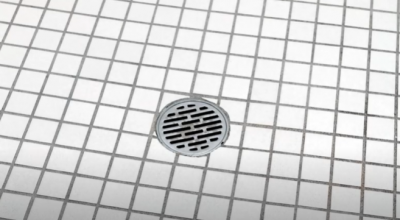
Infestations’ of small flies in commercial kitchens present a number of challenges for Pest Management Professionals. Drain flies and fruit flies not only are difficult to control but have the ability to transfer pathogens from their breeding areas to food preparation surfaces, ultimately impacting humans.
Flies can be hard to manage for several reasons:
- They can complete their life cycle in as little as a few days
- They breed in small, hard to locate areas
- Regular cleaning will not always eliminate breeding areas
- Pesticide re-applications are often necessary due to cleaning activities
- Where the adults are seen is not always associated with where they breed
- Large numbers of flies can breed in a relatively small area
When it comes to small flies, the commercial kitchen environment has all the components of the sweet life – food, moisture, heat and harborage. It’s not a matter of if these pests will appear in these environments, but rather, WHEN. They utilize decaying organic matter as a food and harborage source, making this type of ecosystem important for PMPs to locate and treat or eliminate if possible. If left unchecked, commercial kitchens can quickly become a place where small flies breed extensively and greatly (negatively) impact a diner’s experience.
Pest Identification:
Drain flies (also known as the sewer fly or moth fly), are similar to fruit and phorid flies, and are considered filth flies. Drain flies are very weak fliers, rather they typically prefer to crawl along vertical and horizontal surfaces. To distinguish the difference among these flies, check for the unique vein pattern on the wings and fuzzy moth like appearance
Phorid flies (also known as humpbacked flies) are easily recognized by their humpedback appearance. They are about 1/8 of an inch long and brown in color. While they resemble fruit flies, they lack the red eyes associated with typical fruit flies. Unlike most flies, phorid flies prefer to rapidly run across surfaces when disturbed rather than flying to escape. They are most often found in hospitals and restaurants but are also found in mausoleums and mortuaries. Phorid flies are also easily confused with dark-eyed fruit flies.
Fruit flies (also known as small vinegar flies) are very different from the flies discussed so far. Red-eye fruit flies can be recognized by a pale brown body color with distinct red eyes Dark-eyed fruit flies are slightly larger than red-eyed fruit flies, appear darker in color and have black eyes.
Hot Spots & Inspecting:
When inspecting commercial kitchens, make sure to bring a powerful flashlight, and inspection mirror. Begin by inspecting the hot spots; wall/floor junctions, catch basins, mops and mop closets, floor drains, sinks and areas where food debris accumulates are all areas flies could potentially breed. Other hard to clean areas known to breed flies such as loose or missing grout around tiles, under bar mats and around garbage or refuse areas, and other areas that collect moisture and debris.
Treating the Area:
To begin, remove floor drain covers and clean out any debris. Removal of decaying organic material is important because it, plus moisture is the breeding ground flies need. If organic matter is built up or impossible to remediate or remove, it is important to treat the area thoroughly. Inspect and clean debris from cracks and from under food processing equipment and treat any suspect areas.
Managing flies by simply using a space spray to knock down flying adults will not provide long lasting satisfactory control. Utilizing Insect Growth Regulators (IGRs) such as Tekko Trio and Tekko Trio Foam prevents insects like small flies from completing their development and stops future generations.
Authored by:
Janis Reed, Ph.D., BCE
Technical Services Manager PCO Product Development

